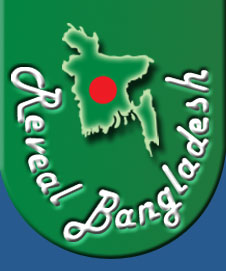ECONOMY OF BANGLADESH
 Bangladesh is an agricultural country, with some three-fifths of the population engaged in farming. Jute and tea are principal sources of foreign exchange. Other important agricultural products are wheat, pulses (leguminous plants, such as peas, beans, and lentils), sweet potatoes, oilseeds of various kinds, sugarcane, tobacco, and fruits such as bananas, mangoes, and pineapples. Bangladesh is an agricultural country, with some three-fifths of the population engaged in farming. Jute and tea are principal sources of foreign exchange. Other important agricultural products are wheat, pulses (leguminous plants, such as peas, beans, and lentils), sweet potatoes, oilseeds of various kinds, sugarcane, tobacco, and fruits such as bananas, mangoes, and pineapples.
Agriculture has in the past been wholly dependent upon the vagaries of the monsoon. A poor monsoon has always meant poor harvests and the threat of famine. Among the remedial measures adopted has been the construction of a number of irrigation projects designed to control floods and to conserve rainwater for use in the dry months. The most important are the Karnaphuli Multipurpose Project in the southeast, the Tista Barrage Project in the north, and the Ganges-Kabadak Project, to serve the southwestern part of the country. Economic planning has encouraged double and triple cropping, intercropping, and the increased use of fertilizers.
Economy of Bangladesh at a glance
GDP: purchasing power parity—$175.5 billion (1998 est.)
GDP—real growth rate: 4% (1998 est.)
GDP—per capita: purchasing power parity—$1,380 (1998 est.)
GDP—composition by sector:
agriculture: 30%
industry: 17%
services: 53% (1997)
Population below poverty line: 35.6% (1995-96 est.)
Household income or consumption by percentage share:
lowest 10%: 4.1%
highest 10%: 23.7% (1992)
Inflation rate (consumer prices): 7% (1998)
Labor force: 56 million
note: extensive export of labor to Saudi Arabia, Kuwait, UAE, and Oman (1996)
Labor force—by occupation: agriculture 65%, services 25%, industry and mining 10% (1996)
Unemployment rate: 35.2% (1996)
Industries: jute manufacturing, cotton textiles, food processing, steel, fertilizer
Industrial production growth rate: 3.6% (1997)
Electricity—production: 11.5 billion kWh (1997)
Electricity—production by source:
fossil fuel: 97.35%
hydro: 2.65%
nuclear: 0%
other: 0% (1996)
Electricity—consumption: 11.3 billion kWh (1996)
Electricity—exports: 0 kWh (1996)
Electricity—imports: 0 kWh (1996)
Agriculture—products: rice, jute, tea, wheat, sugarcane, potatoes; beef, milk, poultry
Exports—commodities: garments, jute and jute goods, leather, frozen fish and seafood
Exports—partners: Western Europe 42%, US 30%, Hong Kong 4%, Japan 3% (FY95/96 est.)
Imports—commodities: capital goods, textiles, food, petroleum products
Imports—partners: India 21%, China 10%, Western Europe 8%, Hong Kong 7%, Singapore 6% (FY95/96 est.)
Debt—external: $16.7 billion (1997)
Economic aid—recipient: $1.475 billion (FY96/97)
Currency: 1 taka (Tk) = 100 poisha
Exchange rates: taka (Tk) per US$1—48.500 (January 1999), 46.906 (1998), 43.892 (1997), 41.794 (1996), 40.278 (1995), 40.212 (1994)
Fiscal year: 1 July—30 June |


 Bangladesh is an agricultural country, with some three-fifths of the population engaged in farming. Jute and tea are principal sources of foreign exchange. Other important agricultural products are wheat, pulses (leguminous plants, such as peas, beans, and lentils), sweet potatoes, oilseeds of various kinds, sugarcane, tobacco, and fruits such as bananas, mangoes, and pineapples.
Bangladesh is an agricultural country, with some three-fifths of the population engaged in farming. Jute and tea are principal sources of foreign exchange. Other important agricultural products are wheat, pulses (leguminous plants, such as peas, beans, and lentils), sweet potatoes, oilseeds of various kinds, sugarcane, tobacco, and fruits such as bananas, mangoes, and pineapples.